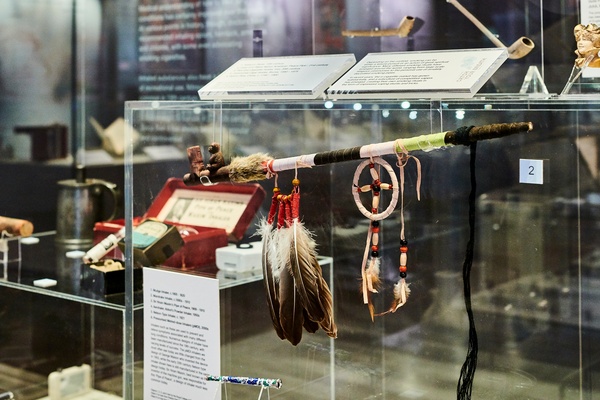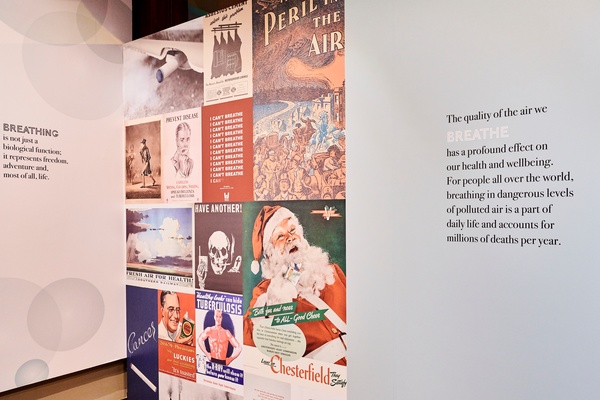‘Sing Sweetly for Tobacco’
by Sarah McLusky, Project Manager
Tobacco, Tobacco, sing sweetly for Tobacco!
by Tobias Hume (c1569 – 1645)
Tobacco is like love, O love it.
For you see I will prove it.
Despite its unassuming appearance, tobacco is probably the most powerful of all plants. Unlike most of its fellow photosynthesisers, tobacco can make humans to do things – grow it, use it, sell it, research it, crave it, sing about it, enslave others for it, even kill for it… as a biologist I can’t help but draw parallels between tobacco and parasites which destroy their host in a callous evolutionary dance which ensures their own survival.
Tobacco is also the only plant with a starring role in our Catch Your Breath exhibition, as a key feature of our ‘Inhale/Exhale’ section which considers some of the ways we add to the breath, for good or ill. As the work of our anthropologist Andrew Russell explores, the story of tobacco is intertwined with the story of human civilization.
Tobacco’s power is attributed to the intoxicating and addictive properties of nicotine. Nicotine is a powerful insecticide, produced by the plants to ward off hungry bugs. Like many drugs, it’s the dose that makes the poison, so levels of nicotine which kill insects have a pleasantly stimulating effect on the human nervous system.
Tobacco originates in the Americas and has been used by native populations there for millennia. Considered a gift from the Creator it was used recreationally, ceremonially and as a commodity for trading long before European explorers landed on American shores in the 16th Century.

However, it was those explorers who first brought tobacco across the Atlantic, and, although controversial from the start (King James I/VI was famously opposed), tobacco soon had much of Europe under its spell. Such was the power of tobacco that Andrew Russell believes the free-thinking and intellectual progress associated with the European Enlightenment might be partially due to the mind-altering effects of the extraordinarily high quantities of tobacco smoked by many intellectuals in the 17th and 18th Centuries.
The arrival of mass produced cigarettes in the late 18th Century led to a new era of aggressive marketing campaigns, often using doctors and celebrities as advocates for the supposed benefits of smoking. From the 1920s, tobacco companies began to make efforts to attract more women smokers, linking cigarettes to the idea of equal rights and new opportunities.

Tobacco’s real downfall begins in the 1950s when Richard Doll and The British Doctor’s Study revealed the causal link between smoking tobacco and lung cancer. Rates of smoking have been declining ever since, with increasing taxation and restrictions in most countries. In the UK less than 15% of people now smoke.
But the lure of both nicotine and the pleasures of adding smoke to breath is still strong and vaping is on the rise. Although legal in the UK due to the fact that, whatever the harms might be, it is certainly much safer than smoking tobacco, it is still controversial and banned in many countries. And tobacco has lost none of its symbolic power among indigenous communities who still perform smoke-filled ceremonies.
So what does the future hold for tobacco? Can we imagine a world without its parasitic hold on humans? Or, like a true survivor, will it simply evolve into another form so that its genes live on? Through biotechnology tobacco may turn from supervillain to superhero, engineered to produce all kinds of useful products from biofuels to medicines. For now, it looks like the stories of humanity and tobacco will remain entangled.
Find out more
- Download Andrew’s book: Russell, A.J. (2019) ‘Anthropology of tobacco : ethnographic adventures in non-human worlds.’, Abingdon, Oxon: Routledge. Routledge studies in public health.
- Read posts about tobacco on the Life of Breath project website
- Listen to this Life of Breath podcast episode marking 10 years of smoke free public places



